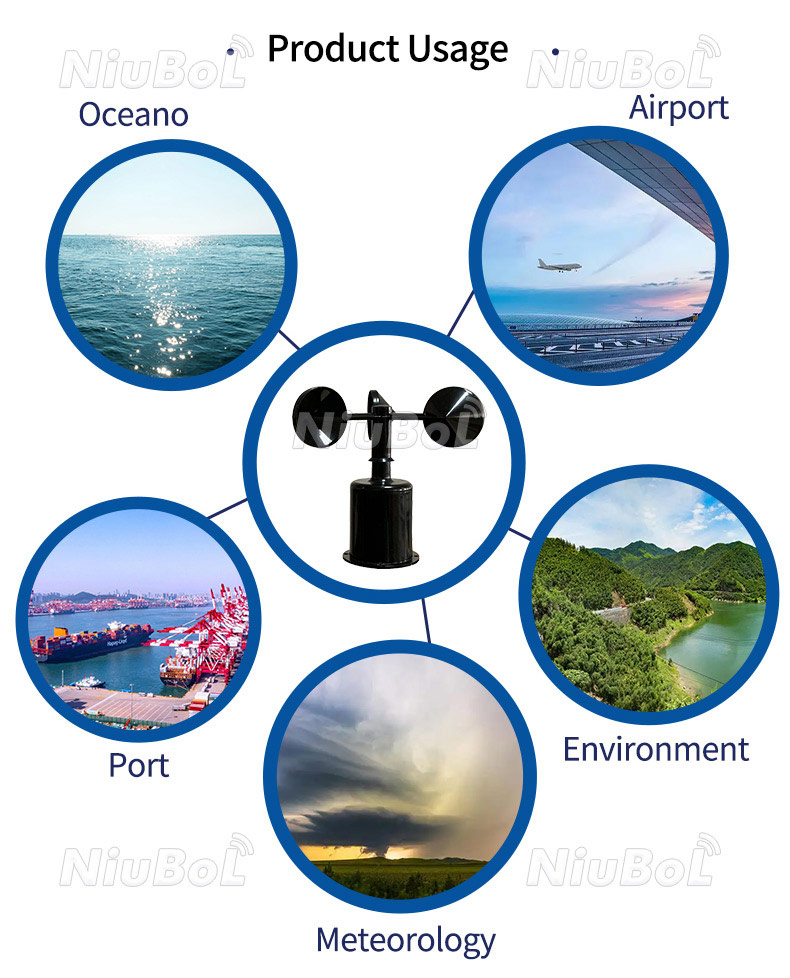

— Products —
 Consumer hotline +8618073152920
Consumer hotline +8618073152920 WhatsApp:+8615367865107
Address:Room 102, District D, Houhu Industrial Park, Yuelu District, Changsha City, Hunan Province, China
All products
Another type of mechanical wind sensor is a wind vane. This device consists of a rotating disc or arrow, which is mounted on a shaft. The disc or arrow is weighted so that it is stable and tends to point in the direction of the wind. As the wind changes direction, the disc or arrow rotates, indicating the new wind direction. Mechanical wind sensors are often used in meteorology, aviation, and maritime industries to provide accurate information about wind conditions. Advantage···
Tel/WhatsApp:+8615367865107
Email:Arvin@niubol.com +Nearly 100 partner company in more than 68 countries. We are committed to providing high-quality, practical products to meet your needs and help you solve problems.Product Details








A mechanical wind sensor is a device used to measure the speed and direction of wind. It operates on the principle of converting the force of the wind into a measurable signal, which can then be used to provide information about wind conditions.
One common type of mechanical wind sensor is a cup anemometer. This device consists of three or more cups attached to a central spindle, which is mounted on a shaft. As the wind blows, the cups rotate, the speed of rotation being proportional to the wind speed. The direction of the wind can also be determined by the orientation of the rotating cups.
Another type of mechanical wind sensor is a wind vane. This device consists of a rotating disc or arrow, which is mounted on a shaft. The disc or arrow is weighted so that it is stable and tends to point in the direction of the wind. As the wind changes direction, the disc or arrow rotates, indicating the new wind direction.
Mechanical wind sensors are often used in meteorology, aviation, and maritime industries to provide accurate information about wind conditions.
Advantages of mechanical wind sensors include their durability and ability to withstand harsh weather conditions. However, they can be less accurate than electronic wind sensors and may require regular maintenance.
1. meteorological observation: weather stations use mechanical wind speed sensors to measure ground wind speed and direction, which is critical for weather forecasting, climate research and natural disaster warning.
2. Aviation and navigation: Wind sensors are used in the navigation systems of airplanes and ships to predict the effects of wind currents on navigation and to ensure safe navigation.
3. Wind power: Wind turbines are fitted with mechanical wind sensors to monitor wind speed to optimize power generation efficiency and ensure safe operation of the equipment.
4. Motorsports: Wind speed sensors are used in motorsports to assess the impact of wind on vehicle performance, especially at high speeds.
5. Military applications: In military training and operations, wind sensors help to assess the effect of wind on the trajectory of aircraft and artillery shells.
6. environmental protection: in environmental monitoring, wind speed sensors are used to assess the wind speed in a specific area, which helps to understand and control the spread of pollutants.
7. Building and structural engineering: In the construction of high-rise buildings and bridges, wind sensors are used to assess the effect of wind on structures to ensure the safety of the design.
8. Outdoor sports: Outdoor sports enthusiasts, such as paragliders, windsurfers and sailors, use wind speed sensors to assess wind conditions to decide whether or not to undertake the activity.
9. Agriculture: In agriculture, wind speed sensors are used to monitor the risk of wind damage to crops and to assess the impact of wind on pesticide spraying.
10. Energy management: In energy management systems, wind speed sensors are used to assess wind resources and provide data to support the planning and development of wind power generation.

These mechanical wind sensors are often used in weather stations, environmental monitoring, aviation, marine navigation, and industrial applications where wind conditions need to be monitored. They provide essential data for a range of purposes, such as weather forecasting, energy production optimization (e.g., wind farms), and safety in various industries.
Sensors & Weather Stations Catalog
Agriculture Sensors and Weather Stations Catalog-NiuBoL.pdf
Weather Stations Catalog-NiuBoL.pdf
Related recommendations
 Multi-Depth Soil Sensor RS485
Multi-Depth Soil Sensor RS485 TDR Soil Moisture Sensor
TDR Soil Moisture Sensor Pyranometer Solar Radiation Sensors
Pyranometer Solar Radiation Sensors Soil ph sensor
Soil ph sensor Tipping Bucket Rain Gauge
Tipping Bucket Rain Gauge Air Temperature and Humidity Sensor
Air Temperature and Humidity Sensor
Screenshot, WhatsApp to identify the QR code
WhatsApp number:+8615367865107
(Click on WhatsApp to copy and add friends)
